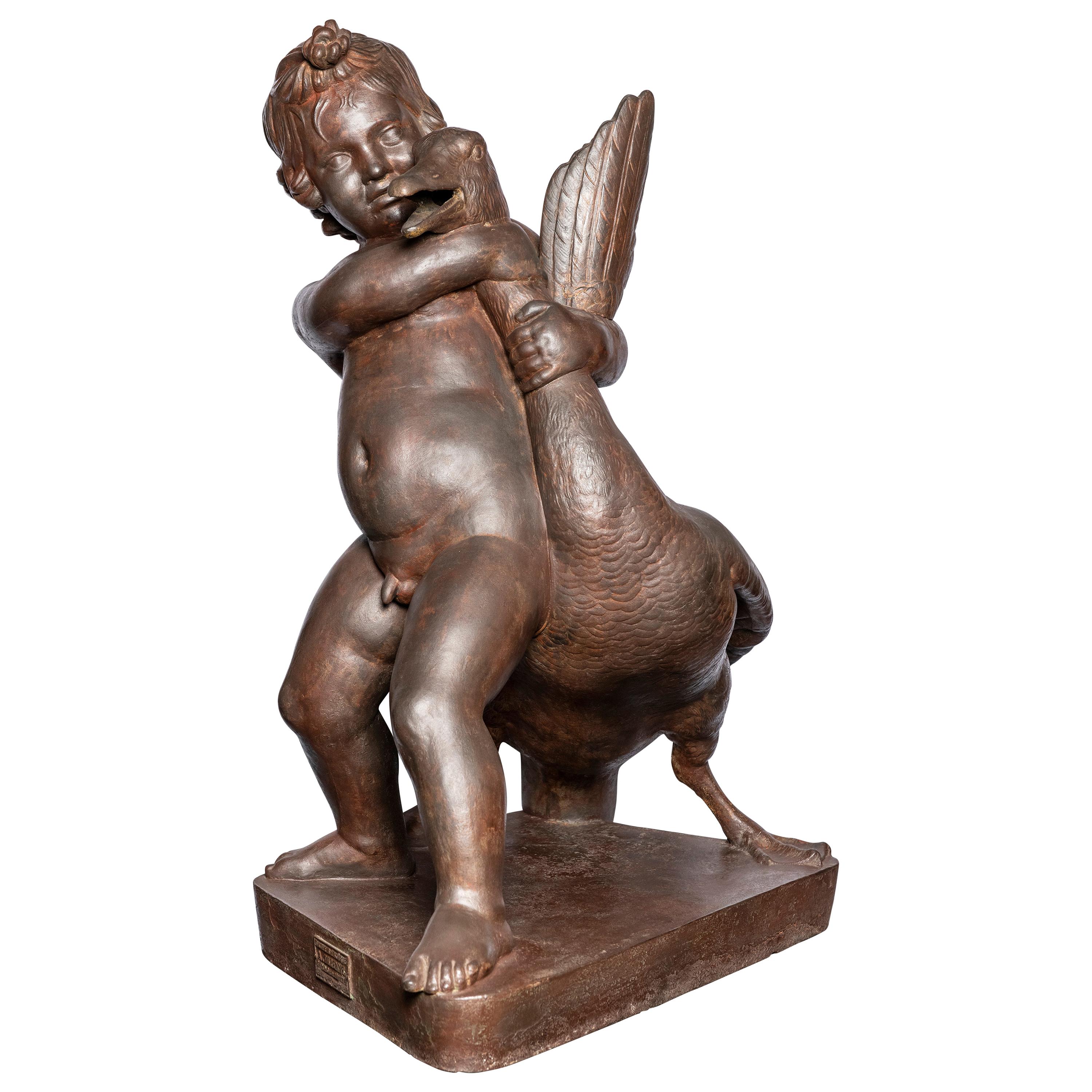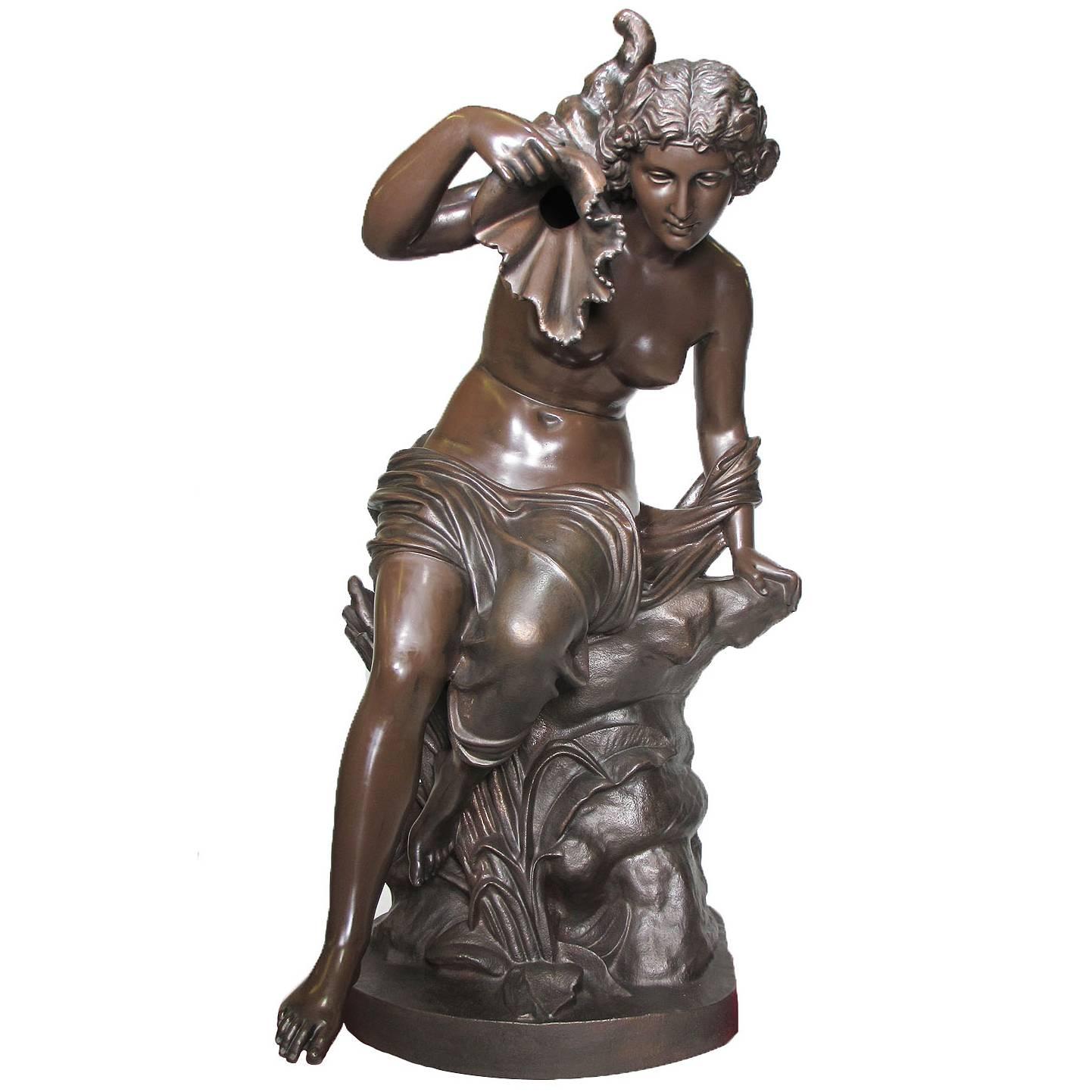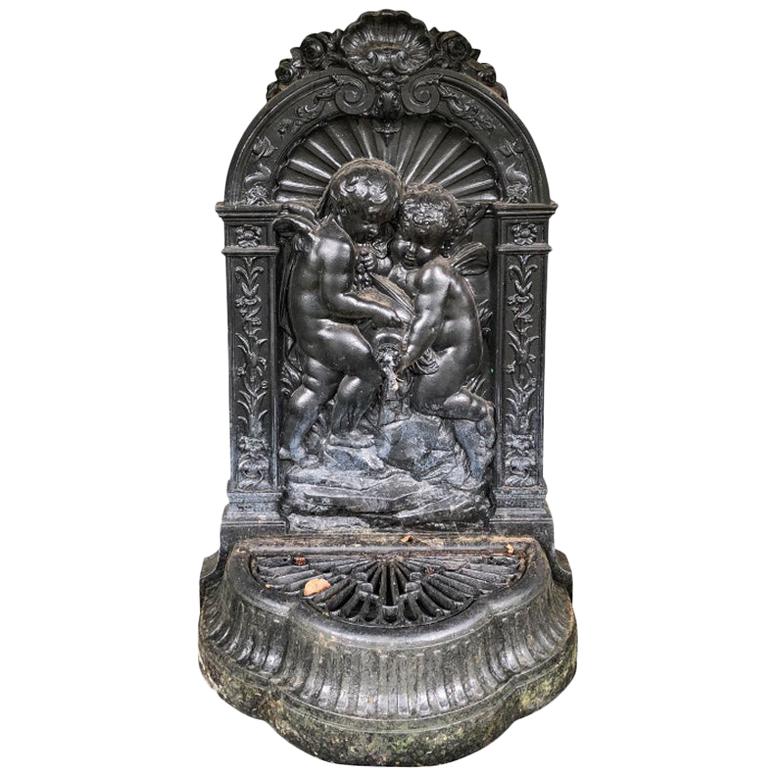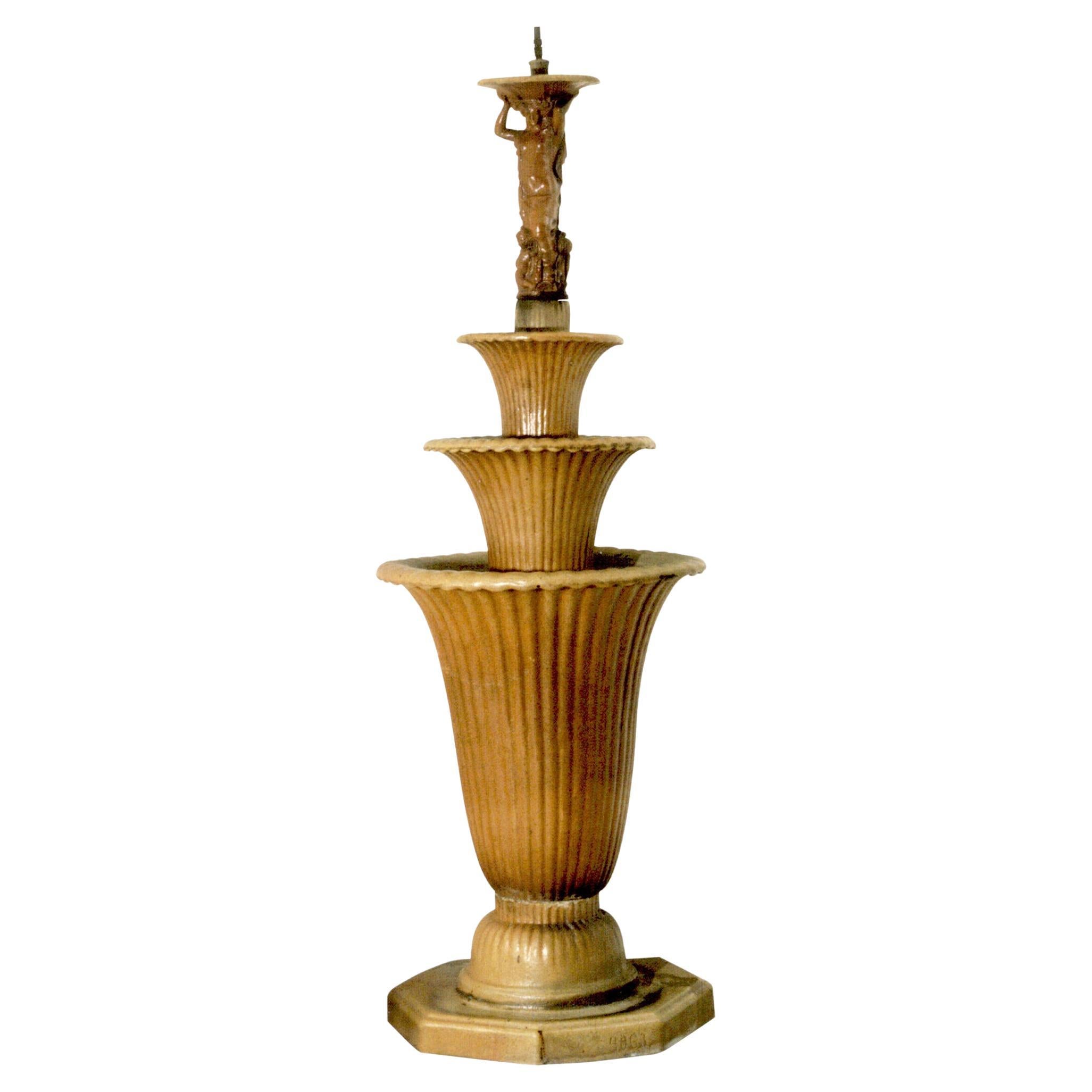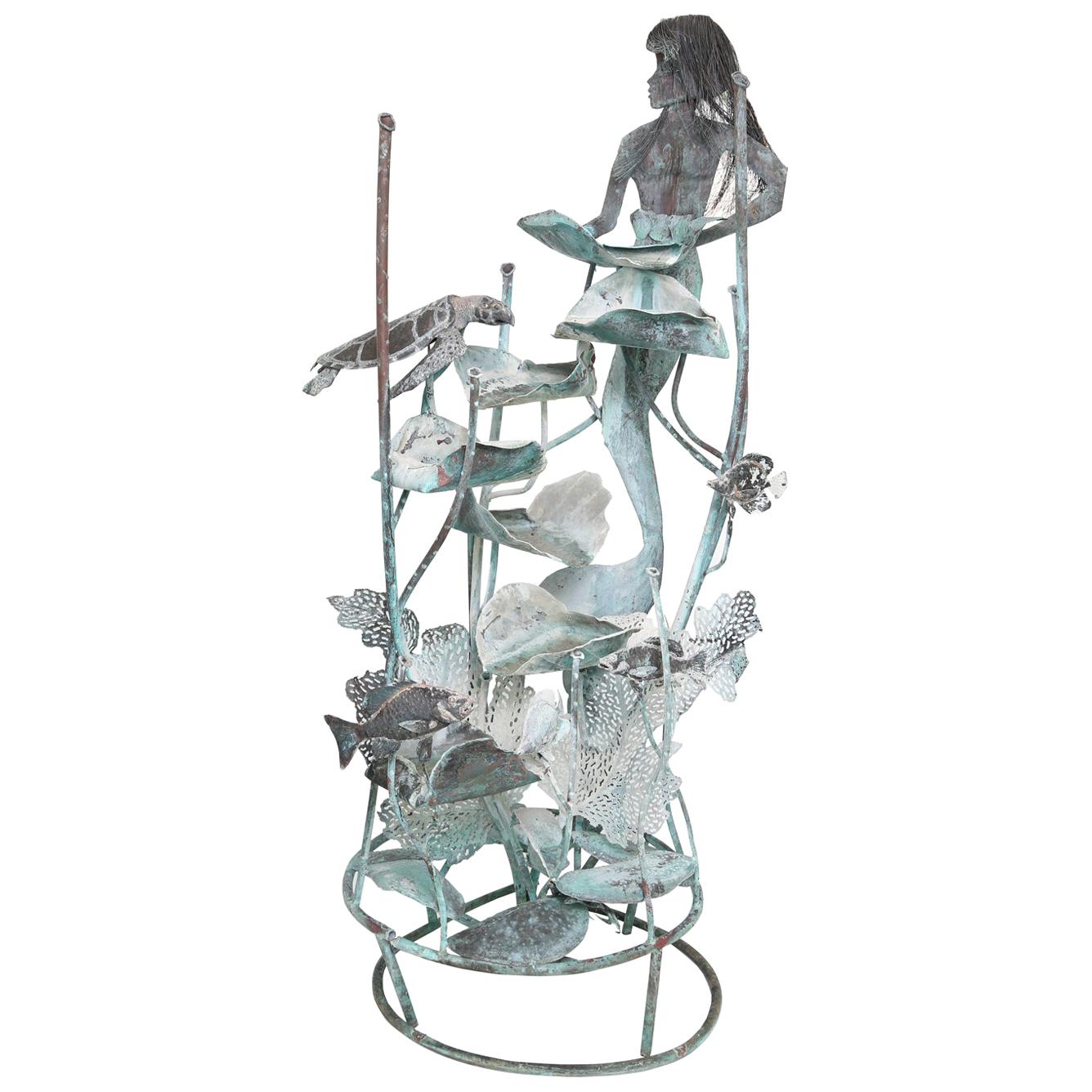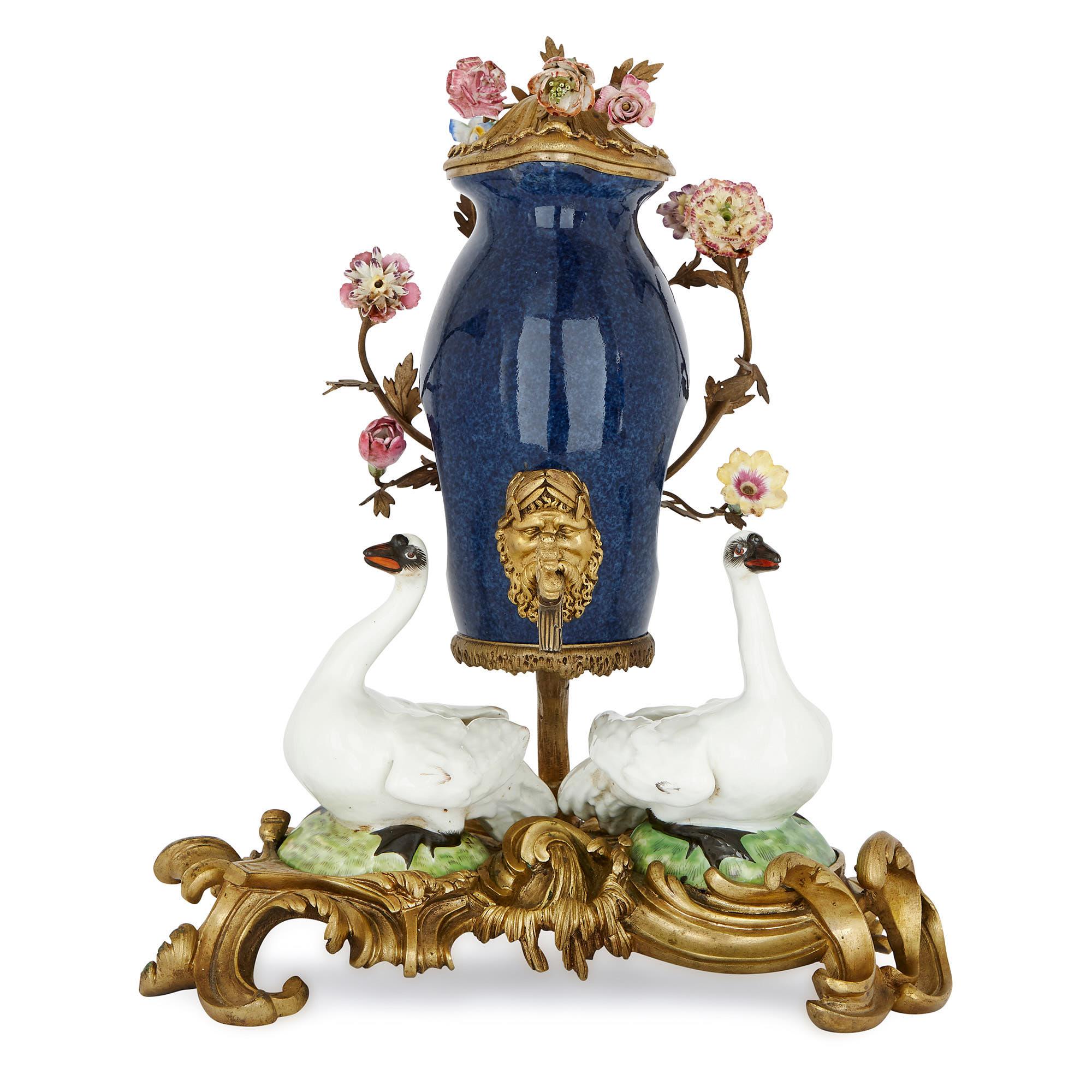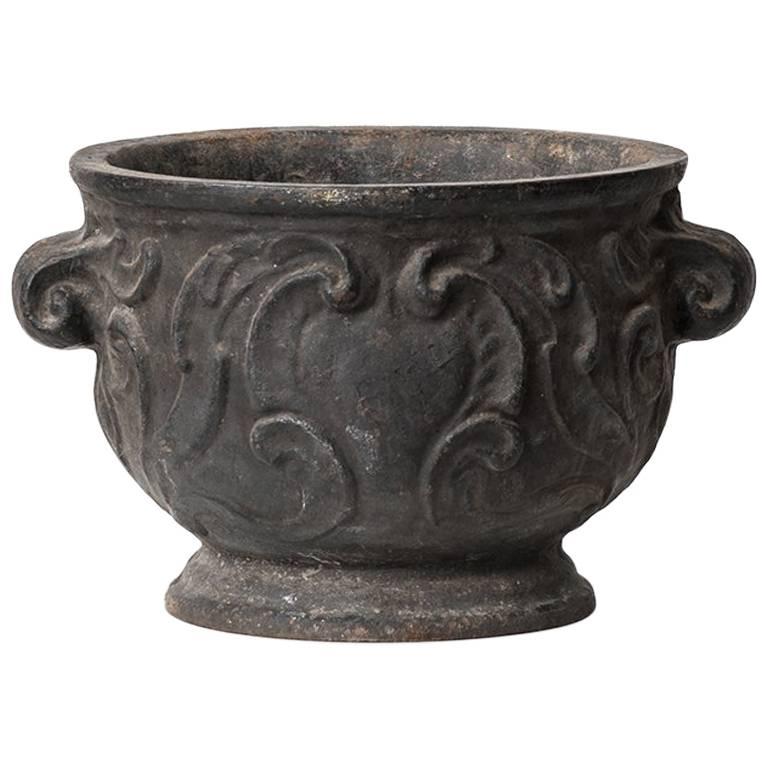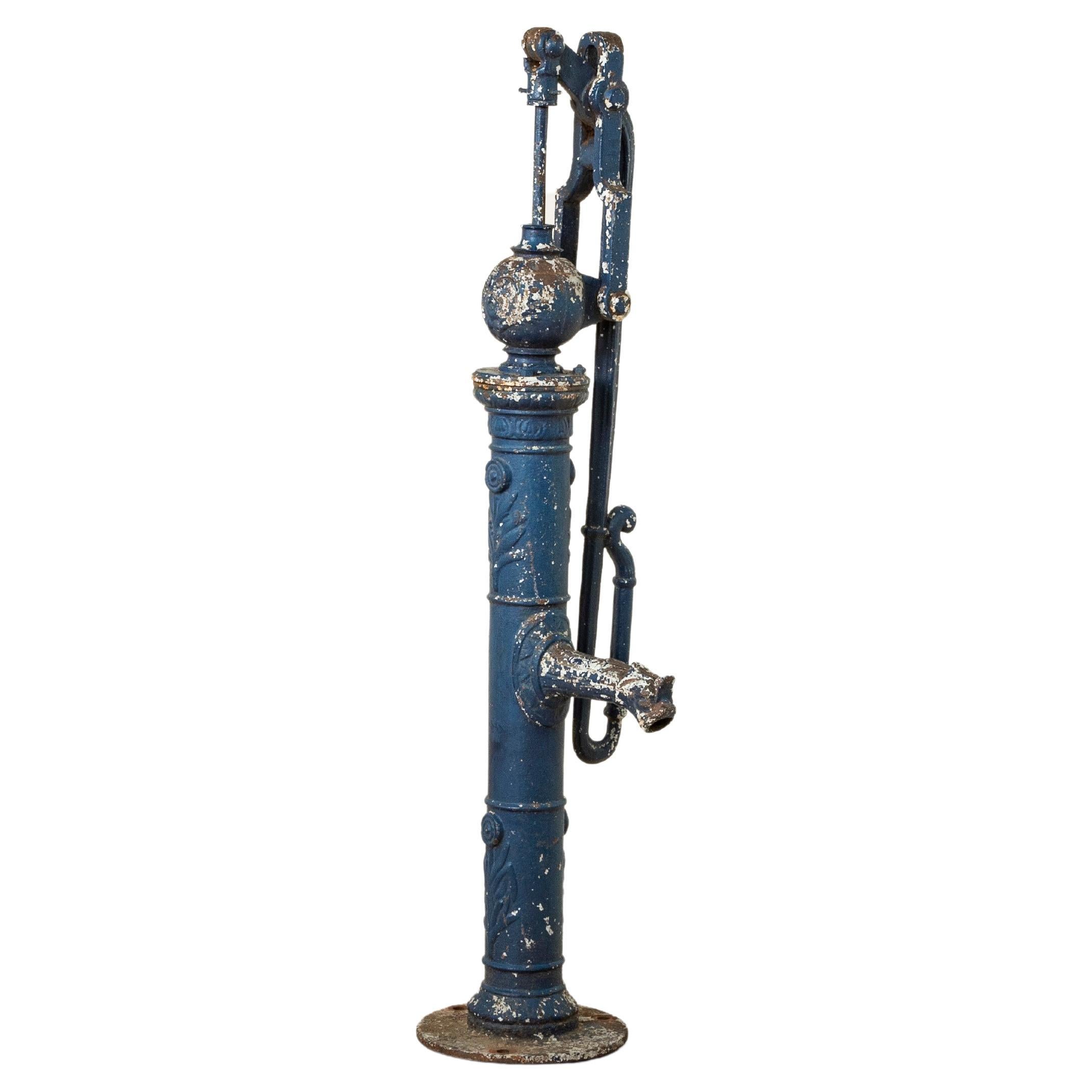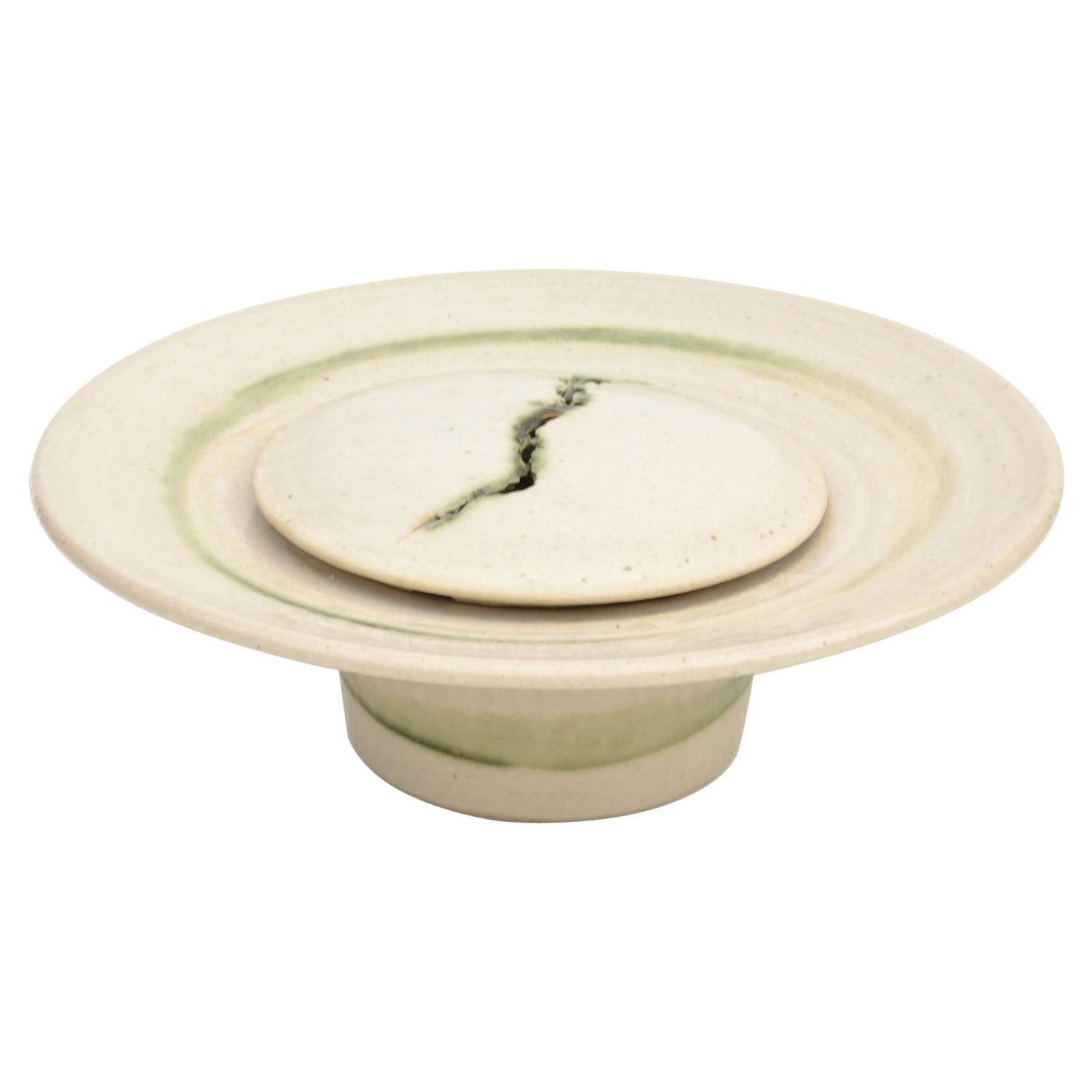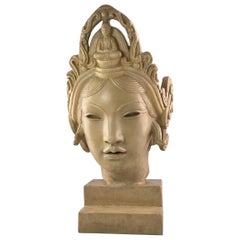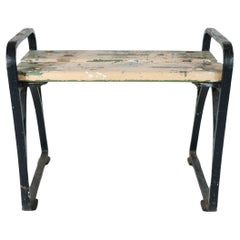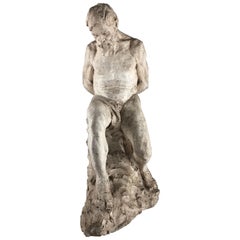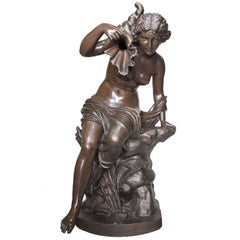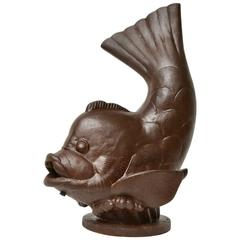
Swedish Cast-Iron Fountain "FISK" from Näfveqvarns Bruk and Designed by Carl O
View Similar Items
Want more images or videos?
Request additional images or videos from the seller
1 of 7
Swedish Cast-Iron Fountain "FISK" from Näfveqvarns Bruk and Designed by Carl O
About the Item
- Creator:Nafveqvarns Bruk (Maker)
- Dimensions:Height: 21.66 in (55 cm)Width: 15.75 in (40 cm)Depth: 11.03 in (28 cm)
- Style:Art Deco (Of the Period)
- Materials and Techniques:Iron,Cast
- Place of Origin:Sweden
- Period:
- Date of Manufacture:circa 1930
- Condition:Wear consistent with age and use.
- Seller Location:Stockholm, SE
- Reference Number:1stDibs: LU100686726293
About the Seller
4.9
Recognized Seller
These prestigious sellers are industry leaders and represent the highest echelon for item quality and design.
Gold Seller
These expertly vetted sellers are highly rated and consistently exceed customer expectations.
Established in 1989
1stDibs seller since 2013
83 sales on 1stDibs
More From This SellerView All
- Early 20th Century Swedish Plaster Sculpture, Art Deco, signed StrindbergBy Tore StrindbergLocated in Stockholm, SEThis is a study for one of the figures that is part of Tore Strindbergs large sculpture "The five continents" placed in Gothenburg, Sweden. This one represents Asia. The sculpture ...Category
Vintage 1920s Swedish Busts
MaterialsPlaster
- Vintage iron stool, Swedish Grace 1930sLocated in Stockholm, SEA Swedish stool cast in iron with wood seating in untouched condition. Swedish grace and made around 1930-1940. Perfect for indoors or outdoors use. Designer is unknown but it is a s...Category
Vintage 1930s Swedish Stools
MaterialsIron
- Sculpture of Plaster, signed Gallé and dated -93 (1893)Located in Stockholm, SEA plaster sculpture by André Vauthier-Galle (1818–1899). A seated male figure with his hands behind his back. Executed in a very realistic way. The sculpture very much reminds of Auguste Rodins "The Thinker" in its pose. The sculpture has a great patina. The sculpture comes from the workshop of the Swedish painter and sculptor Jonas Åkesson...Category
Antique 1890s French Figurative Sculptures
MaterialsPlaster
- 19th Century Cast Iron Relief Portrait of King Karl XIV Johan.Located in Stockholm, SEA fine medal plaque in cast-iron of King Karl XIV Johan (1763-1844), empire period. It is a relief portrait of Karl XIV Johan as a Roman general, with text "Carolus XIV Iohannes Rex Sveciae et Norvegiae" and made by Finspång's foundry. It has a small metal loop attached on the back so that it can hang on a wall. Finspång's foundry was for about three centuries Sweden's largest cannon foundry, located in Östergötland's northern mountain range, Finspång is mentioned for the first time as a foundry in 1573. A small foundry was built there at the time, which was first run on behalf of the crown, but in 1587 was leased to the Dutchman Wellam De Wijk, who seems to have held it until 1599, when it was passed back to the crown. in 1641 Louis De Geer...Category
Antique Early 19th Century Swedish Empire Wall-mounted Sculptures
MaterialsIron
- Caricature Drawing of August Strindberg, by Carl Magnus LindquistLocated in Stockholm, SEA wonderful and funny caricature drawing on paper by Carl Magnus Lindquist (1884-1977). Signed Carl-Magnus and dated 9/1 -23. August Strindberg wa...Category
Vintage 1920s Swedish Drawings
MaterialsPaper
- Sculpture. Indian Chief. Signed Gunnar Nylund, Rörstrand 1940sBy Gunnar NylundLocated in Stockholm, SEA sculptured head of an American Indian Chief. It is said that this really is a self-portrait of Gunnar Nylund, the artist. It has its original wooden stand . The height is 42 cm wi...Category
Vintage 1940s Swedish Busts
MaterialsClay
$2,987 Sale Price22% Off
You May Also Like
- Scandinavian Modern Näfveqvarns Bruk Cast Iron Leisure UrnBy Nafveqvarns BrukLocated in New York, NYA large Scandinavian Modern cast iron "Leisure Urn" depicting cultural arts on one side and the demand for social change during the 1930s. One side has marching workers car...Category
20th Century Scandinavian Scandinavian Modern Urns
MaterialsIron
- Cast Iron Fountain Sculpture "Boy with Goose" Signed Antoine Durenne FonderieBy A. DurenneLocated in Buenos Aires, Buenos AiresCast iron fountain sculpture "Boethus Boy with goose" signed Antoine Durenne Fonderie, France, late 19th century. Green marble pedestal dimensions: 95 ...Category
Antique Late 19th Century French Neoclassical Figurative Sculptures
MaterialsIron
- Large French 19th Century Cast-Iron Fountain Figure of a Seated Nude MaidenBy J.J. Ducel Me de Forges 1Located in Los Angeles, CAA Fine and Large French 19th Century Cast-Iron Fountain Figure Modeled as a Nude Maiden Seated on a Rocky Outcrop Holding a Cornucopia in Her Raised Right Hand, by J.J Ducel. Cast-Signed "J.J. DUCEL Me de FORGES, PARIS". Circa: Paris, 1880. A retailer of fine cast-iron ornaments, J. J. Ducel was recorded as supplying cast-iron works through Paris as early as 1810 in the Pas-de-Calais. The factory was sold in 1878 to the Fonderie de la Haute-Marne and all of the firm's models were subsequently bought by the Val d'Osne foundry. However, prior to the firm's sale, critics at the 1867 Paris Exposition Universelle proclaimed that "Ducel is the great manufacturer of works in cast-iron, to whom Paris is so largely indebted for the grace and elegance that supply so many of the adornments of its streets". Ducel, Val d'Osne and other associated foundries produced both bronze and cast-iron statuary. Cast-iron is corrosive, whereas non-ferrous bronze does not suffer the same detrimental effects of weathering and is therefore a superior and more expensive material. Height: 51 1/2 inches (130.8 cm) Width: 22 inches (55.9 cm) Depth: 30 inches (76.2 cm) The foundry of Val d'Osne became highly regarded for the varied nature and quality of its castings in the second half of the 19th century. Commonly known after 1870 as simply Val D'Osne, the company was originally founded by J.P.V. André in Val d'Osne 1835 and developed rapidly, absorbing smaller foundries in the Haute-Marne area east of Paris. The foundry contributed to the London International Exhibition of 1851, where a bronze fountain cast with classical figures attracted much attention. André also specialised in fancy castings and architectural fittings. His Paris adress was at 14 Rue Neuve, Menilmontant. In 1855 the Barbezat & Cie Foundry was born out of the André workshop. In 1867 Barbezat & Cie changed its name to Houille & Cie. Then, in 1870, it changed its name to Société Anonyme du Val d'Osne. With the change of name came the change of casting mark and adress: Fonderies d'Art du Val d'Osne, 58 Bd Voltaire, Paris or simply Val d'Osne. Cast-iron had been in production during the 18th century but its inferior status to the more fashionable and delicate wrought-iron had generally confined its use to architectural work. By the early 19th century, however, rapid developments of the Industrial Revolution combined with the simultaneous burgeoning of a new middle class provided the impetus for a dramatic expansion in its application and in a short space of time a proliferation of iron foundries across Europe and America thrived on the production of everything from inkstands to railway stations. The use of cast-iron for garden ornament became particularly widespread at this time, as the possibilities for its mass-production at a fraction of the cost of bronze made it the material of choice for indoor/outdoor statuary...Category
Antique 19th Century French Classical Greek Figurative Sculptures
MaterialsIron
$24,850 Sale Price44% Off - American Cast Bronze Garden Fountain with Figural Boy Holding Koi Fish. C. 1870Located in Hollywood, SCAmerican cast bronze garden fountain with standing figural boy holding Koi fish on a two-tiered shell form scrolled base with turtle at his feet, Late 19th century.Category
Antique 1870s American American Empire Fountains
MaterialsBronze, Copper
- Large And Notable Cast Iron Garden Fountain With PuttiLocated in Bridgeport, CTHeavy cast iron Putti Fountain for exterior or interior use. Black painted arch shaped top with high relief decoration of two putti pouring from a vessel as the fountain spout. Foliate decorated borders and a shell and floral crest. The shaped lower part with openwork foliate top. Working condition is unknown. H. 62", W. 32", Depth 24" Condition: The water spigot...Category
Mid-20th Century Unknown Neoclassical Fountains
MaterialsIron
- Original and Unique Ceramic Fountain by Otto Prutscher and Michael Powolny, 1914By Otto Prutscher, Wiener Keramik Werkstätte, Michael PowolnyLocated in Vienna, ATExecuted by Michael Powolny for the Wienerberger Keramikwerkstätten, ceramic and stoneware, ochre colored, body holding a dish in her outstretched arms standing above a three-tired Cascade of basins with fluted decoration. One image shows the model of the fountain in the studio of the "Gebrueder Schwadron" in Vienna, circa 1910-1914. Literature: Karl Maria Grimme, Gärten von Albert Esch, Wien, Leipzig 1931 p.29. Elisabeth Frottier, Michael Powolny, Keramik und Glas aus Wien 1900...Category
Early 20th Century Austrian Jugendstil Fountains
MaterialsCeramic, Stoneware
$158,824Free Shipping
Recently Viewed
View AllMore Ways To Browse
Carl Milles
Nafveqvarns Bruk
Antique French Water Fountain
Stone Basins
18th Century French Fountain
Round Basin
Large Water Fountain
20th Century Water Fountain
Used Water Fountains For Gardens
Dolphin Patio
Antique French Basin
Stone Water Fountain
Fountain Spain
Hand Carved Stone Fountains
Antique Stone Garden Fountains
French Courtyard
Midcentury Modern Fountain
Fountain Figure

